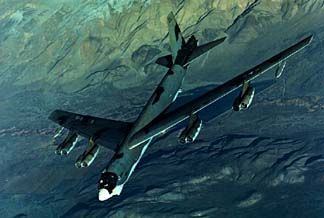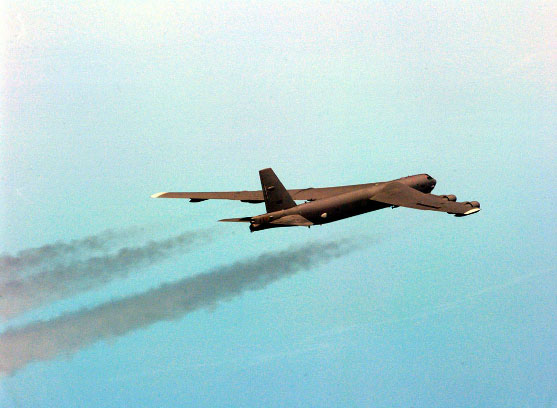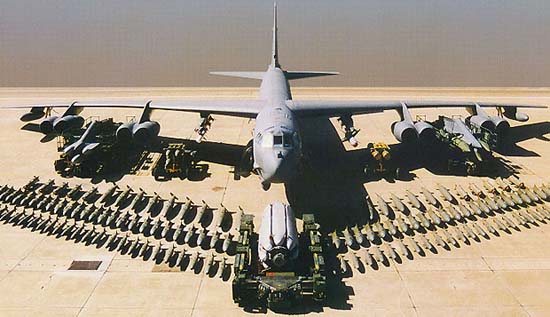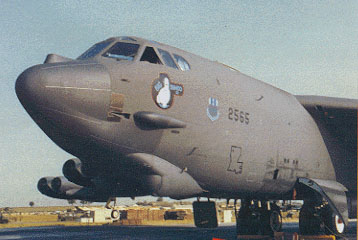|
Global Aircraft -- B-52 Stratofortress
|
|
|
|
|
 |





|
|
Webmaster's Notes
| |
The B-52 first entered service in June 1955, now only 2 versions remain in service with its successor, ACC. A total of 193 J57 powered B-52G were built with integral
wing tanks and short fin, and armed with four 0.50-in machine guns. In desert Storm, all missions were assigned to the G model, operating as free-fall bombers.
The B-52G is well protected be numerous ECM systems , and 2 under nose ‘blisters’ house LLLTV and FLIR sensors - used with the terrain avoidance radar to provide
low-level penetration capability. Some B-52 were used in many aircraft testing as motherships to carry them up to testing altitude, such as the X-15 program.
|
|
|
B-52 Specifications
|
Primary Function: Heavy bomber
Contractor: Boeing Military Airplane Co.
Power plant: Eight Pratt & Whitney engines TF33-P-3/103 turbofan
Thrust: Each engine up to 17,000 pounds
Length: 159 feet, 4 inches (48.5 meters)
Height: 40 feet, 8 inches (12.4 meters)
Wingspan: 185 feet (56.4 meters)
Speed: 650 miles per hour (Mach 0.86)
Ceiling: 50,000 feet (15,151.5 meters)
Weight: Approximately 185,000 pounds empty (83,250 kilograms)
Maximum Takeoff Weight: 488,000 pounds (219,600 kilograms)
Range: Unrefueled 8,800 miles (7,652 nautical miles)
Armament: Approximately 70,000 pounds (31,500 kilograms) mixed ordnance -- bombs, mines and missiles. (Modified to carry air-launched cruise missiles, Harpoon anti-ship and Have Nap missiles.)
Crew: Five (aircraft commander, pilot, radar navigator, navigator and electronic warfare officer)
Accommodations: Six ejection seats
Unit Cost: $74 million
Date Deployed: February 1955
Inventory: Active force, 85; ANG, 0; Reserve, 9
|
|
|
|
|
